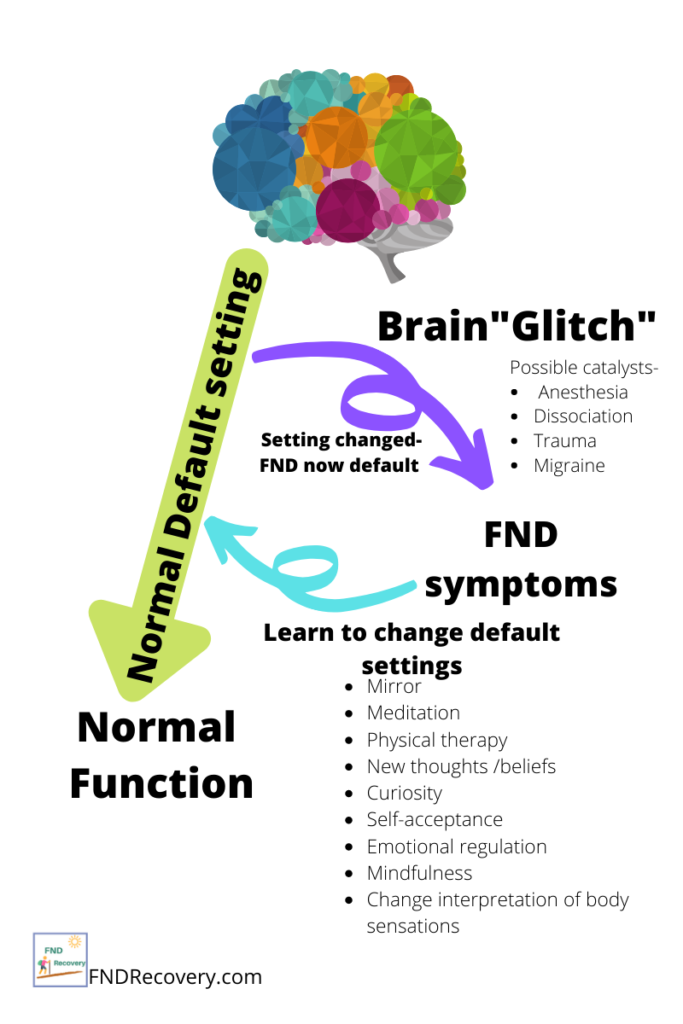Default Settings

Default Settings- a new way to look at FND
As technology becomes more complicated, it seems like it is easier for little glitches to take place in our electronic devices that are so frustrating to figure out. Sometimes the latest update will fix a problem, but as often as not, more glitches show up after the update.
I’m incredibly amazed that I was able to get my blog up and running and I confess I held my breath every time I opened my WordPress account for months, waiting for some unknown technological disaster to strike my poor little blog. A few times, disaster did strike. Once a new plugin update shut down my entire site. I had no idea what happened or what to do, but thankfully the nice folks at Bluehost were able to figure it out.
Recently my husband’s phone appeared to be possessed. His notifications were announced by a grating, highly annoying tune. He kept going into his settings, changing the notification tone, but within a few hours, back came the dreaded noise. So… why did that keep happening? I already mentioned my favorite theory, demon possession. Other theories I tossed around were Big Brother, the Deep State, and a psychological disorder. As he waited his turn in the Verizon store to demand an exorcism of his new phone, he tried one more thing. Lo and behold, there was another place to change default ringtone settings. Hallelujah! The offensive melody was forever banished!
I have come to think of my Functional Neurological Disorder this way. Somehow the default setting for movement in my brain slips out of “normal” and into “FND”. A few years ago I learned that using a mirror to let my brain better connect with the muscles it directs can restore the correct factory setting. For a long time I lived in fear of a permanent reset back to FND mode, but as I’ve worked on strengthening my brain, analyzing what is happening in my mind and body when symptoms arise, and learning to “reset” more quickly, that fear has dissipated.
As I’ve become more aware of how to restore the normal default setting, I recently realized that I can also consciously slip into the abnormal state. FND is NOT made up, consciously produced, or easily controlled. I have learned to recognize and control my different brain states after years of practice, curiosity, and analysis.
Although I’m a little wary of sharing this due to a huge potential for misunderstanding, I’ve decided to make a video showing how I can control symptoms in the hopes of helping others struggling with this challenging condition to perhaps learn to control their symptoms also.
If you do not personally have FND, please realize that it is not simple to overcome it. It may look like an easy process, but it is an extremely complicated disorder. Compassion and respect for those trying to navigate this difficult condition are mandatory if you want to help a patient, friend, or family member.

Great Post and Video MAX! It’s comforting and inspiring to see someone with a near identical walking pattern gain back their control and to know its possible because I just saw you do it!! Have you any additional tips on diverting attention from movement? This is what I find so hard. How can I change awareness of my legs when they’re playing the… “I’m stuck” or “you’re gonna fall” game?
Great question, Louise! I’m thinking about smooth movement, gliding, picking up my feet, but not focusing on the feeling of weakness. It took some time to let go of “I’m stuck” or fear of falling. As you re-learn normal patterns, it gets easier. Also, focus on your destination instead of muscles. Movement works best when it is automatic.
Be sure to appreciate and celebrate every success! Your walk yesterday deserves a major reward!
Hi Max, your post above has really inspired me and overall, it’s great to find you because you’ve created a site that offers me practical ideas and help, to try out. Just now I answered the door to a neighbour and instead of habitually tensing up my shoulders thinking it will stop my head twisting (which doesn’t really work), I took a breath, let my shoulders drop/relax, and managed a short chat well. I know it’s just one event, but still it is one SUCCESSFUL event and my brain has acknowledged that!
Great work, Lisa! Yes, celebrate every success, no matter how small. Each step in the right direction adds up. I’m so impressed by your attitude and perseverance!
Max
Thank you Max. Although my walking doesn’t look really dysfunctional all the sensations of weakness are there + pain in differing amounts. I really do notice similarities. I feel inspired to reflect upon what you have said here and try this change of mindset out…in small bursts, I think, at first…so as to not give myself the possible sourness of failure. PS. I just wanted to add that you look amazingly younger in your August 2020 photo! This also inspires me for my own future.
Thanks, Elaine. I love hearing that my experiences are helpful to other people. I agree with your plan to try things in short bursts. Try not to interpret the results of experimentation with your symptoms as failure. It’s just information, no judgement needed. If the medical profession doesn’t know how to provide effective help, why should you? Curiosity, self-acceptance, and celebration of every tiny improvement will help your brain move forward in learning the best way for YOU to take control of your body. We are all so different.
Not sure which photo makes me look younger, but I may or may not experiment sometimes with photoshopping apps that remove wrinkles! 😜
Max
Oh my goodness, that was amazing! I’ve been experiencing FND for four years now. It took two to get a diagnosis. What you have been able to explain and show are so heartening that I just might be able to to get better too. I’ve been really down lately because I haven’t felt that I’ve made much progress. Especially tough now because of COVID and not able to see doctors or therapists regularly. Going to dive in and read some more of your blog pages!
Thank you so much,
Vanessa
I’m glad it was helpful, Vanessa.You are not alone!
❤️Max
Thank you so much Max for the transparency and effort out into your wonderful video. I’m not sure if I will get a diagnosis of FND but It was suggested by my Rheumatologist ( I have Giant Cell Arteritus (GCA) and have then experienced myopathy due to Steroids used to treat the GCA). I have experienced whole body tremors, uncontrolled head nodding or shaking, crumples to the floor etc.
As I have recovered from the myopathy and the steroid dose has tapered to much more manageable amounts, these symptoms have largely disappeared.
I was also diagnosed withPPPD ( Persistent Perceptual Postural Dizziness) which I believe could fit under the umbrella of a FND. So I am very interested in how to retrain my brain to overcome these incongruous sensations.
I really appreciate your efforts to educate and share your story for the benefit of so many others. If we the individuals affected by these little understood conditions don’t take the responsibility to educate and work on our improvement, no one else will really do it. Thank you so much.
Thank you so much for your kind comment, Coralee. Wishing you the best on your journey to better health!
Max
I do the same, i say : my legs and body are strong. And i sometimes walk backwards and it helps also.